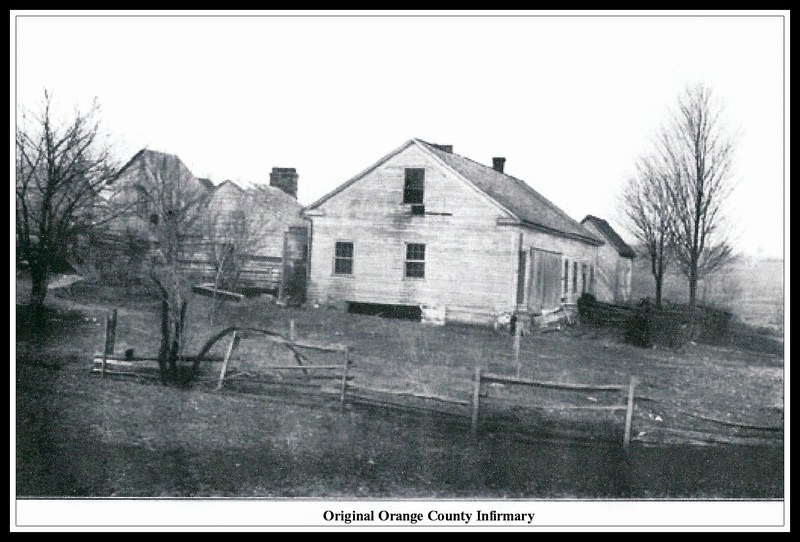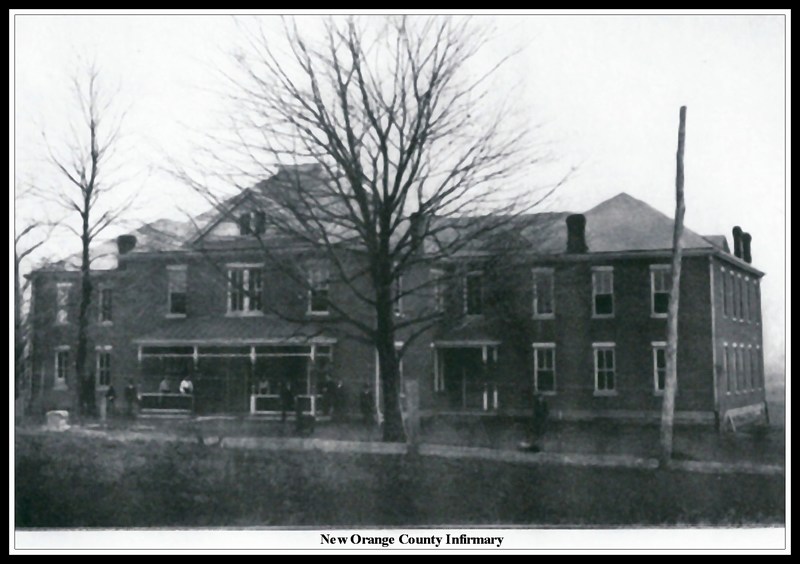THE COUNTY PAUPERS
From the organization of the county to the present the care
of poor persons has been assumed at public expense. In each township Overseers
of the Poor were appointed whose duty required them to look after the wants of
the helpless and report the outlay to the County Board for settlement. During
the years 1816 and 1817 only $11.50 was thus paid out of the County treasury. In
1818 there was expended $79.75; in 1819 the amount was $62; in 1820 was $109.50;
in 1821 was $193.12; in 1822 was $144.74. and in 1823 was $62. Total for the
first eight years of the county $662.61. After this the expenses gradually
increased until in 1835 it was determined to purchase a poor farm. A special
committee, May 4, 1835, bought of Aaron Maris for $600, the northeast quarter of
Section 5, Township 1 north, Range 1 east, also thirty-two acres on the south
half of Section 32, Township 2 north, Range 1 east. Four hundred dollars were
paid down and the remainder January, 1, 1836. Upon this farm were the ordinary
private dwelling and out-houses of that day. These were improved and enlarged
and the permanent paupers taken thereto. Anderson Meacham became the first Poor
Superintendent. He leased the farm and was to take care of the poor. In June,
1836, he resigned and Thomas Maris and Thomas Braxtan (?) were appointed. John
H. Campbell took their place in 1837. He was to manage and lease the farm to
others. At this time there were from none to six inmates. In 1840 a Committee of
three - Leonard Green, John Baker and T. V. Thornton - was appointed to
superintend the farm, with authority to lease it to some suitable person. At
this time the county undertook to furnish everything in the way of
supplies.
In 1841 it was decided to sell the poor farm and purchase
another of better land and location. Accordingly, the old one was offered for
sale at public auction on the court house steps, and sold to William A. Bowles,
the lowest and best bidder, for $500 in three quarterly installments. The
special Committee to sell was Daniel Dayhuff, John Baker and T. V. Thornton.
This sale took place November 1, 1841, and in February, 1842, the county
purchased a new farm of 120 acres of Aaron Stout, being part of the southwest
quarter of Section 20, Township 2 north, Range 1 east, paying for the same $600.
The deed was signed February 21, 1842. Upon this farm were substantial
buildings, which were further enlarged and improved. The Committee who selected
and bought this farm were William Lindley, Daniel Dayhuff, Jonathan Lindley,
Clement McDonald and John Baker. A Committee of three Directors was appointed to
manage the farm, and to lease it to a husbandman who was to care for the poor,
cultivate the farm, etc., and the Directors were to visit the same quarterly to
inspect its condition, etc. James Clements was leased the farm by John
Hostetler, Jonathan Lindley and Edward McVey, the first Board of Directors.
Clements was paid $200 a year. In June, 1842, there were five inmates of the
asylum. In 1848 a cow was ordered bought for the farm. In 1844 Clements, who
continued in charge of the farm, was paid $158, and he was to pay a rent of two
bushels of corn per acre. Clements continued until 1848. and was then succeeded
by Jonathan Lee, who was paid $180 per annum. In March, 1849, he was hired for
three years for $233.33 per year to take care of the farm, and at the expiration
of this period was again hired at a reduction in wages and some other changes.
In March, 1854, there were only two paupers in the asylum. In this year Mr. Lee
seems to have died, and his time was filled out by his widow, Grace Lee. At this
time J. H. Sherrod, Lee Hazlewood and James C. Pearson were Poor Physicians,
employed by the county. In 1857 Nathan Allen was appointed Poor Superintendent,
but soon resigned, and Mrs. Grace Lee was appointed. The Board of Directors or
"visitors", as they were called, and the "Board of County Physicians" were
continued. Nearly all the leading physicians were at times employed to doctor
the paupers. Mrs. Lee was continued until 1862, when she was succeeded by W. W.
Wells, for $395 per annum. Later, as in 1867-68. his wages were increased to
$500 per year. The Poor Superintendents in 1871-72 were R. H. Sanderson and
McGruder Butler. The next year John Webster was appointed for $400 per year.
There were thirteen paupers and five insane in 1873. Webster’s wages in 1873-74
were $475. In March, 1874, there were sixteen inmates, and in March, 1875,
eighteen. James A. Hill became Poor Superintendent in 1876-77 for $290 per year.
In March, 1877, there were seventeen inmates, and in March, 1879, nineteen. In
1879 William A. Brock was appointed Superintendent. In March, 1880 there were
only live inmates. In 1880-81 Brock was paid $264 per year. In June, 1881, there
were five inmates. Late in 1881 James Hill became Superintendent. In the fall of
1882 there were seventeen inmates. Columbus Underwood became Superintendent in
1883-84 for $365 per year, and was succeeded in 1884-85 by Jeremiah Claxton,
Jr., for $400 per year. The house upon the poor farm is a frame structure worth
about $600. It was built about thirty years ago, and is no longer suitable to
the demands of the county, though it is made to answer the purpose. It would be
a credit to the county to erect a larger and better building.
The Research of Derrill Ray Wilson, 1991
Courtesy of Reverend Mother Estelle Irene Kinkade Wilson 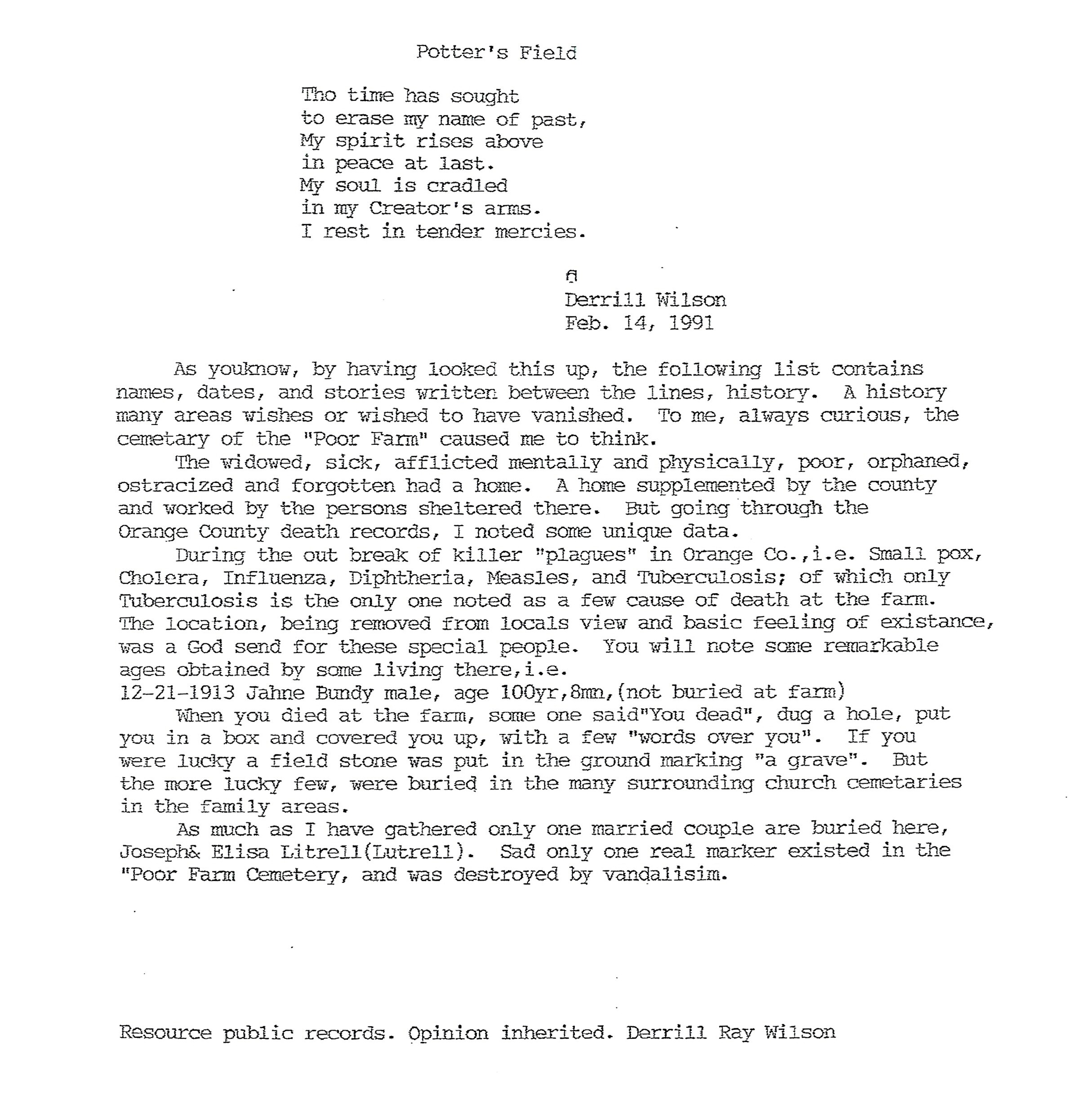 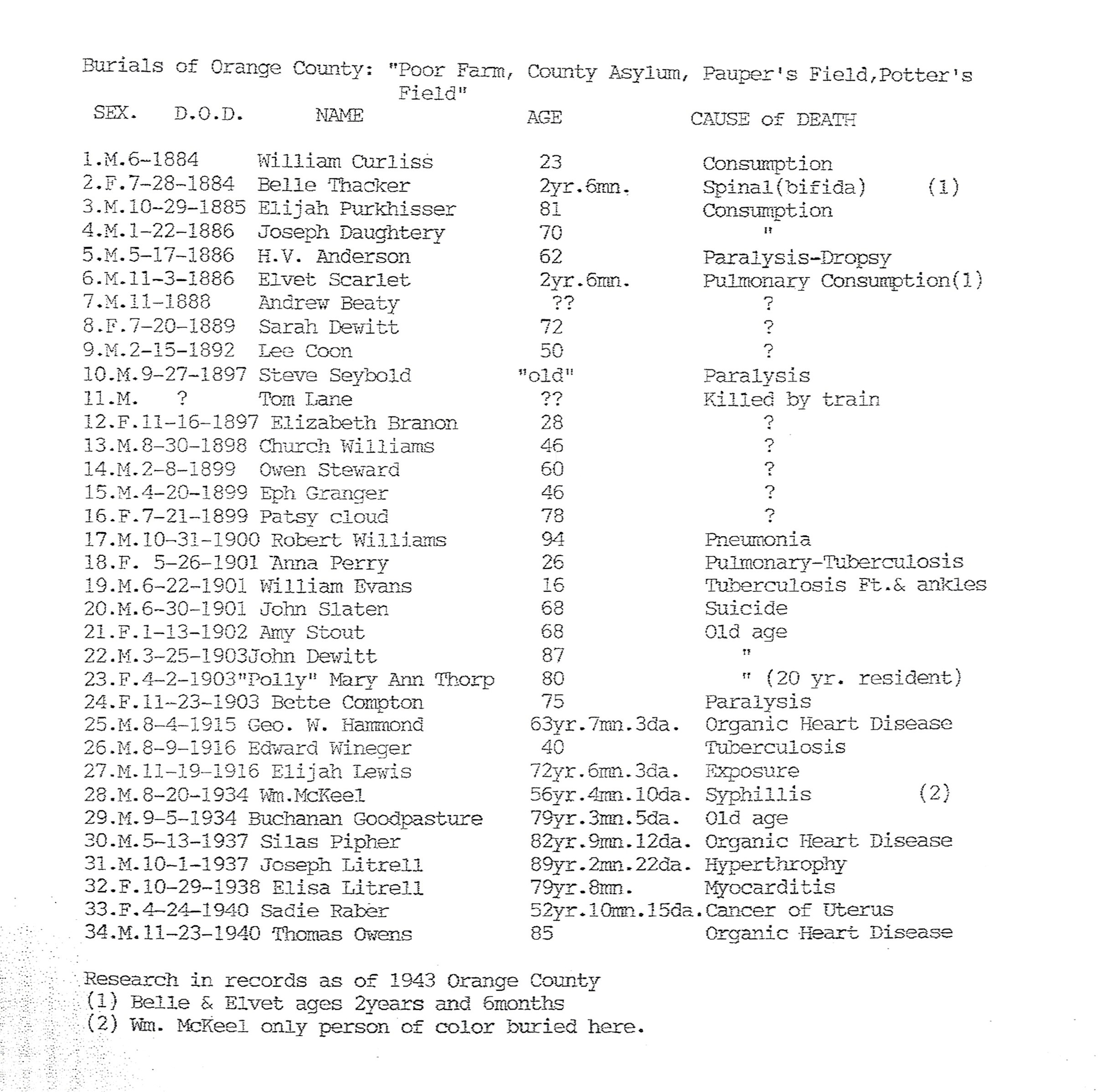 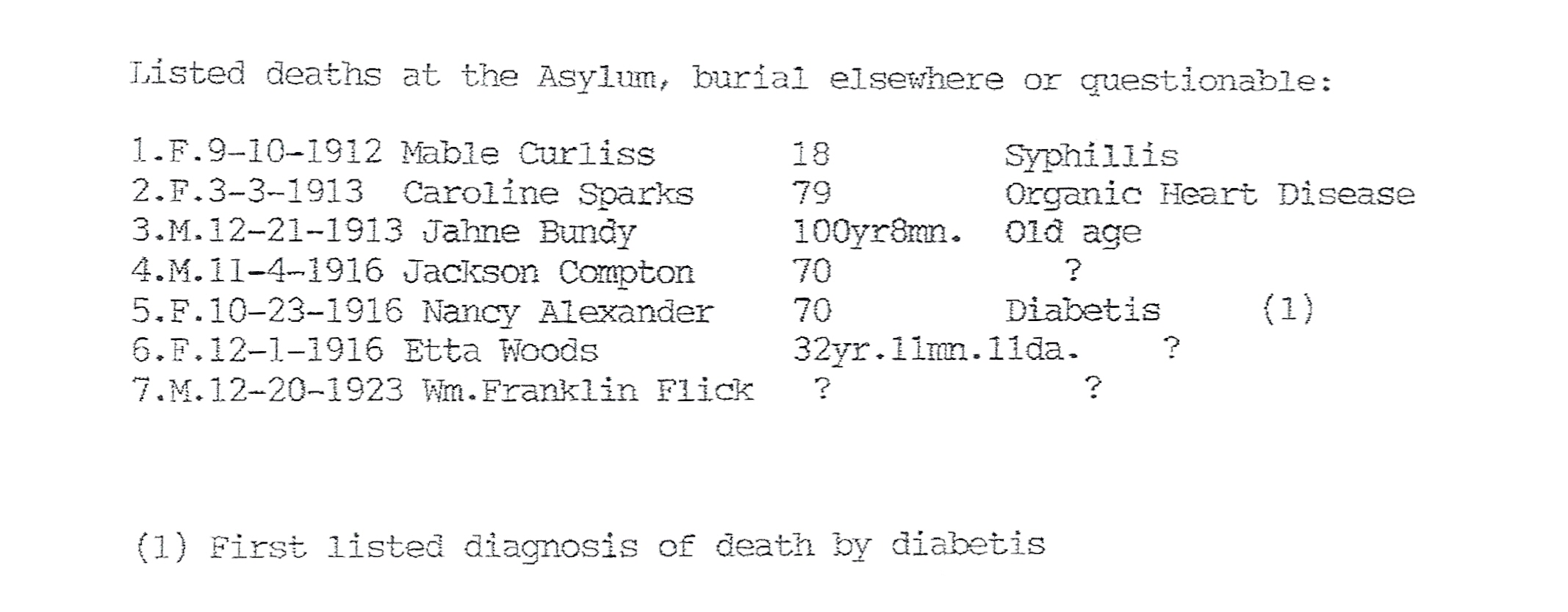 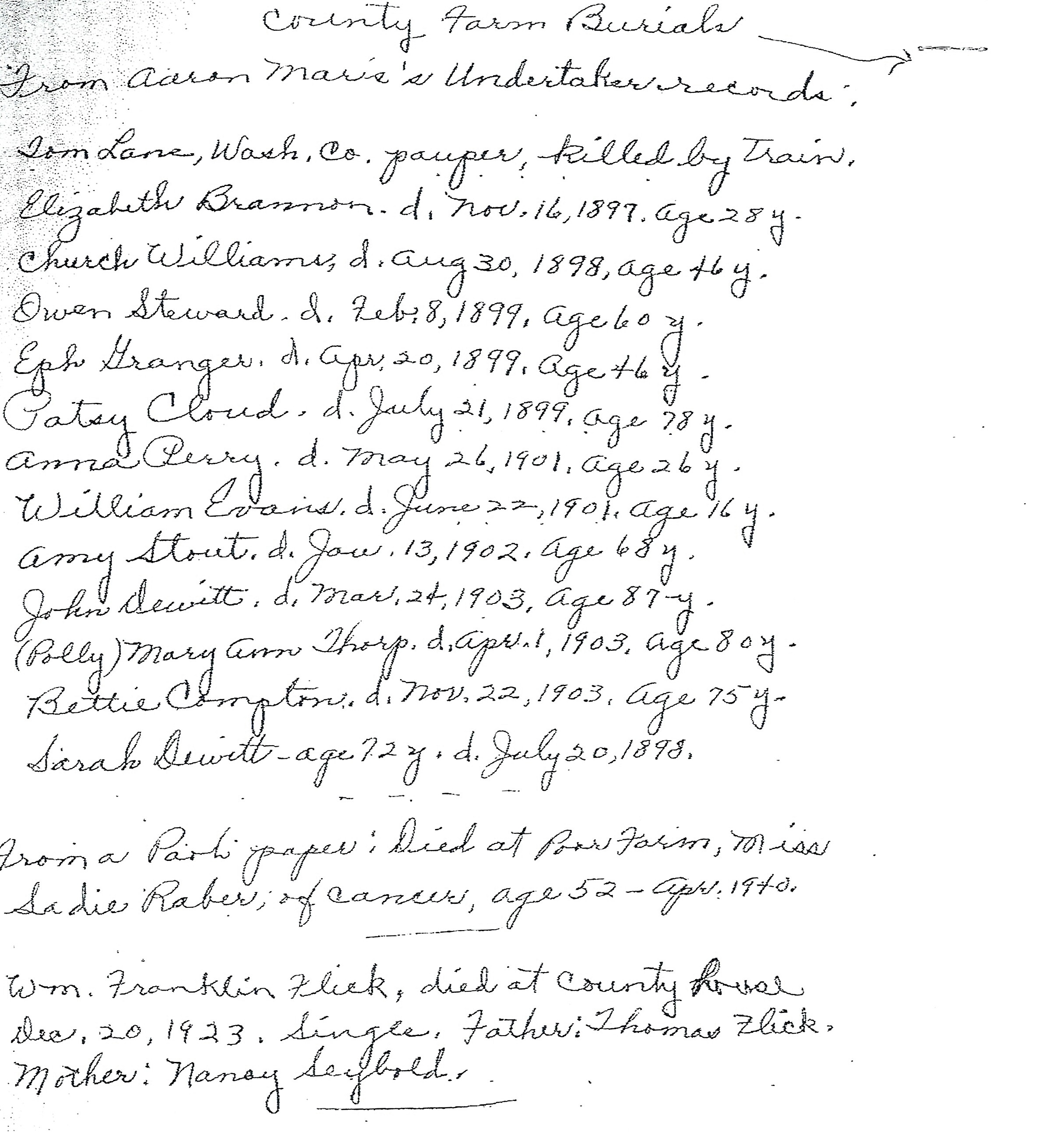
|
